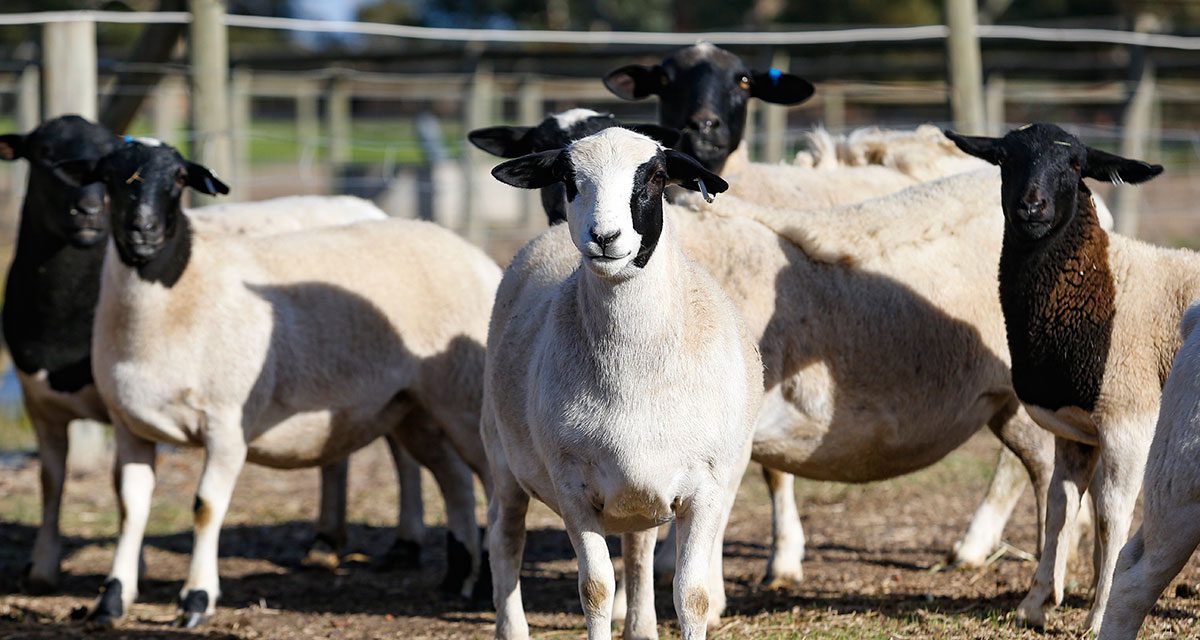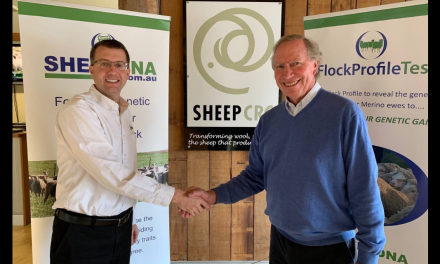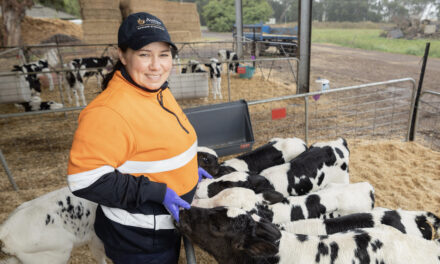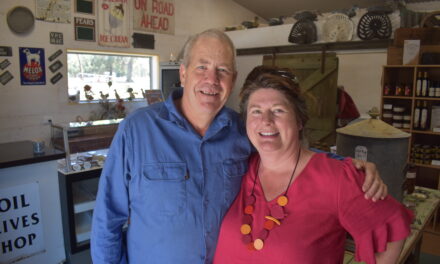When you’ve got barely 2ha and still want to run livestock, there is one sheep that really fits the bill. The Dorper is easy care, has few lambing issues, doesn’t need mulesing, crutching or shearing; produces lambs twice a year and multiple births are routine. It takes a lot of the guesswork out of selection
Yep, you can take the girl out of the farm but it’s a hell of a lot harder to take the farm out of the girl.
And even though Glenys Dwyer had a pretty hard life on the farm the first thing she did when she and husband Damien bought their 2ha on the Murray Valley Hwy west of Echuca was buy some sheep.
Not a lot.
As far as livestock go, Glenys had a pretty small, small farm.
She grew up on dairy farms and also bred spotted ponies with enormous show and competition success (but retired from that when her star mare died at the ripe old age of 36).
A mare that produced progeny so good one her foals was sold by Glenys as a 17-year-old stallion and since then has been owned as far afield as Queensland and Tasmania and now resides in Pakenham.
As a teenager in northern Victoria she would have to milk 40 cows before being allowed to head off for pony club.
Which was 25 miles (40km) away.
And she would have to ride there and ride back, “nearly always getting home well after dark”.
But like most farm people the early riser still has to be doing something.
“I started off with a few ewes and a Wiltipoll ram, which was a full shedder,” Glenys said.
“I didn’t want to have to worry about shearing and crutching,” she said.
“It started about six years ago. We were growing plenty of feed here and paying someone to come in and slash it so it seemed a better idea to buy a few lawnmowers to keep the grass down.
“Then we could also generate a few dollars with the lambs.”
Her first lot of sheep weren’t all that good but she now runs a pure Dorper operation and is delighted with their work on keeping the grass down, the fertility, ease of care and returns at the saleyards.
Although she has bred her own rams she has recently splashed out and bought in an outcross to inject new genetics in the 20 ewes she runs.
Statistically lambing would more than double that number with the Dorper reputation for multiple births but the ram runs with the ewes year round and that means a constant cycle of lambing.
Dorpers lamb in less than five months and Glenys said hers cycle again about six weeks from birth and they come on every 17 days.
“I have only had one set of triplets but twins are common,” she said.
“But despite the extra numbers I still prefer a single lamb, they do better, it’s easier on the mother and they grow out faster,” Glenys added.
“I wean them off at four months and if I’m not keeping them as breeders we take them across to the Shepparton saleyards at seven months when they are around 25kg liveweight,” she said.
Any ewe that is not a full shedder is culled and Glenys and Damien did all the fencing on their property, which is divided into multiple paddocks for rotational grazing.
That included ringlock mesh and while they are paddock fed if feed is low because of numbers or weather conditions Glenys has a supplier of lucerne and she always has a few bales of oaten hay to add some roughage to their diet.
After some research she is also trialling some line breeding with her ram being put over his own daughters, from which she expects to get some top lambs – but all ram lambs will go to the meat works.
Glenys records birth details but does not do any weighing.
She has sown down four of her paddocks and has been able to get plenty of water onto them to offset the dry summer and autumn.
“We use an annual base of clovers, rye and native grasses with a summer and winter pasture,” Glenys added.
“The Dorpers do really well on it and compared to the Wiltipoll I started with am getting much better and more consistent lambs.”
She has also had the vet out to one ewe and got some good hands-on advice and now manages lambing herself.
And is careful her maiden ewes are kept on a strict feed intake so lambs do not get too big before birth.
On a rising plane of nutrition going into joining Glenys said she levels them off about two months before lambing to minimise problems.
The Dorper’s origins stretch back to the 1930s when there was a clear need for a sheep breed to produce fast-growing lambs with a high quality carcase under extensive conditions such as Australia.
Originally bred for the arid regions of South Africa, Dorpers were produced from crossing Blackhead Persian ewes with a Dorset Horn ram (with the Dor from Dorset and Per from Persian providing the breed’s name).
Later some Van Rooy genetics were introduced to white variants to get the White Dorper.
Since being introduced to Australia in mid-1990s Dorpers have become one of the fastest growing sheep breed in Australia due to their potential to adapt to the many varying climates and grazing conditions we have to offer.
Dorpers have more than lived up to their reputation to produce a high quality carcase through rapid weight gain, conformation and fat distribution and as well as being non-selective grazers with excellent feed conversion.
With their shedding ability, they are low maintenance and do not require shearing, mulesing, crutching or tail docking.
Dorpers and White Dorpers are also highly fertile, polyoestrus and very maternal, producing fast growing vigorous lambs.
But as meat only sheep, many farmers in traditional wool country have been reluctant to take them on because of the current price of wool as well as contamination.





